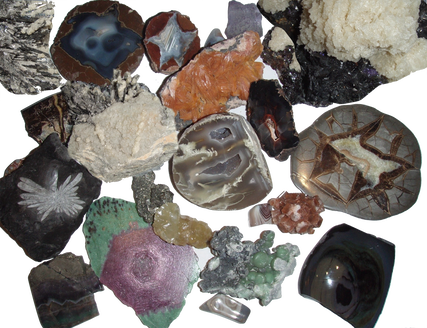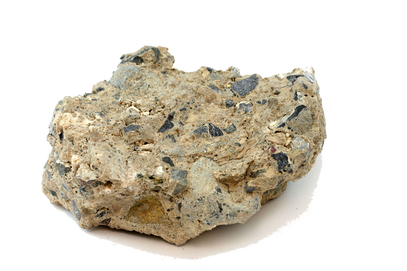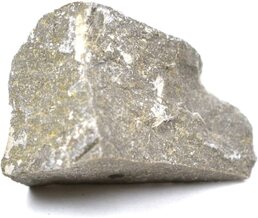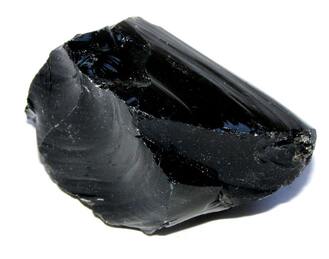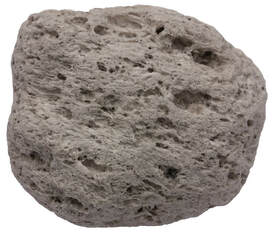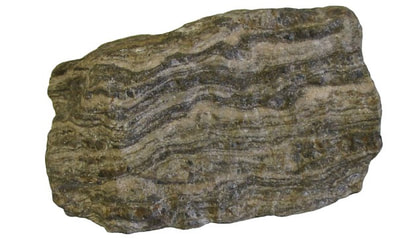EIS 13: Classifying Rocks and Minerals
Materials
- You may find a magnifying glass or strong pair of reading glasses to be useful, but this is not necessary.
- You will need to find rocks around your house, neighborhood, and/or nearest park.
Procedure
The ability to classify objects, regardless of what they are, is an important skill that will teach you keen observational skills. This activity will be all about classifying rocks.
First, familiarize yourself with the differences in appearance for igneous, metamorphic, and sedimentary rocks, as well as minerals.
Minerals do not have chunks or crystals: they are the crystal. They have a uniform appearance throughout, and have an organized structure, which may be crystalline. Some examples are shown below.
First, familiarize yourself with the differences in appearance for igneous, metamorphic, and sedimentary rocks, as well as minerals.
Minerals do not have chunks or crystals: they are the crystal. They have a uniform appearance throughout, and have an organized structure, which may be crystalline. Some examples are shown below.
Sedimentary rock will usually have large chunks of other rocks or minerals that makes it very easy to spot, as seen in the photo below. They may have soft, crumbly layers, but not always. Sedimentary rock without large chunks will be very soft and easily scratched with your fingernail.
Sedimentary rock with chunks
Sedimentary rocks without chunks; very soft and easily scratched
Igneous rock has two main types that you will notice. The first cools quickly and is very smooth (like obsidian, shown below). The second cools slowly and will have visible bubbles or gaps due to trapped air in the rock (like pumice, shown below). Even if there are gaps, the rock will be very hard and not scratch easily. Igneous rock will never have layers, so if your rock does have layers, you know it’s either sedimentary or metamorphic.
Obsidian
Pumice
Metamorphic rocks are most easily distinguished when they have a recognizable banding pattern, which are layers that tend to be tight, bent, and distorted, as shown below. Not all metamorphic rocks have banding, though. In that case, it’s easiest to rule out that the rock is either sedimentary or igneous.
Metamorphic rocks will have small crystals, which you can see with a magnifying glass but not with your naked eye. They will not have large bits, so if you see large chunks you know it is sedimentary. They will also be hard and not scratch like sedimentary rocks would.
There are more advanced classification methods that help to distinguish between igneous and metamorphic rock with greater accuracy, but these are not easily done without a lab. So, for this class you can assume that if a rock doesn’t look like pumice or obsidian and isn’t sedimentary, it’s probably metamorphic.
Metamorphic rocks will have small crystals, which you can see with a magnifying glass but not with your naked eye. They will not have large bits, so if you see large chunks you know it is sedimentary. They will also be hard and not scratch like sedimentary rocks would.
There are more advanced classification methods that help to distinguish between igneous and metamorphic rock with greater accuracy, but these are not easily done without a lab. So, for this class you can assume that if a rock doesn’t look like pumice or obsidian and isn’t sedimentary, it’s probably metamorphic.
Metamorphic rock with banding
If you would like to see more examples of these rock types, you can explore this website.
Once you’re familiar with these general rules for classifying rocks, go find some! Look around your yard, neighborhood, nearest park, or house. Find and classify at least 5 different rocks. Try to find a sedimentary, igneous, and metamorphic rock, but don’t worry too much if you can’t find one of each of these near you: that type might not be common where you live.
If you find any particularly cool rocks, we want to see them! If you have an Instagram and the permission of your relevant responsible adult, share a photo or video with us @eons_learning, #RocksEons.
Once you’re familiar with these general rules for classifying rocks, go find some! Look around your yard, neighborhood, nearest park, or house. Find and classify at least 5 different rocks. Try to find a sedimentary, igneous, and metamorphic rock, but don’t worry too much if you can’t find one of each of these near you: that type might not be common where you live.
If you find any particularly cool rocks, we want to see them! If you have an Instagram and the permission of your relevant responsible adult, share a photo or video with us @eons_learning, #RocksEons.
Image sources: (1) Brocken Inaglory, © 2007; (2) James St. John © 2014, (3) James St. John © 2015, (4) Brocken Inaglory, © 2006, (5) benjamint444 © 2009; (6) Siim Sepp © 2005
